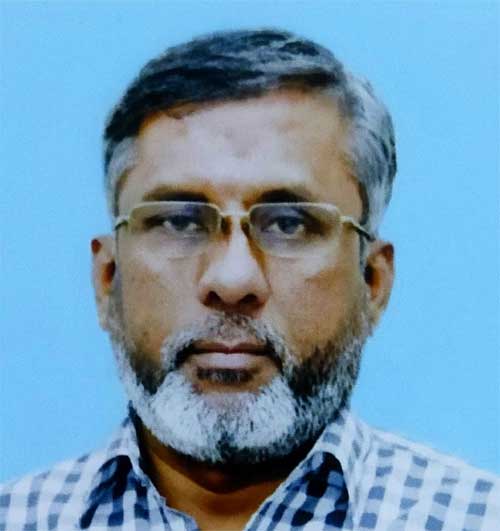After about a hundred years of colonial occupation, on the fateful day of August 14, 1947, the status quo ante was re-established with the rebirth of the land of the Indus as Pakistan. The nation that started building its villages, towns, and cities over 9,000 years ago, created a civilization, battled the invaders from the east as well as from the west, built the world’s first university, and sustained itself through unmatched tenacity and perseverance, was again sovereign and free. However, this did not come easy.
The struggle for the rebirth of the nation cost an untold number of Muslim lives in planned genocidal massacres, ethnic cleansing, rape and abduction of Muslim women, and destruction of property. The Indian invasion of Muslim-majority Kashmir began even before freedom was granted by the British, resulting in massive human suffering and undermining regional stability. The unjust and inappropriate division of boundaries, economic, and military assets impinged on Pakistan’s integrity and security. At the outset, Pakistan had to face numerous political, economic, and security challenges. The struggle to preserve the nationhood had just begun, again.
The Indian Sikh Plan: In the post-British period, Indian Sikhs wanted to establish a Sovereign Sikh State in areas between Rivers Chenab and Jamuna. To achieve this aim, a plan was conceived, which later became known as the “Sikh Plan.” The outlines of the “Sikh Plan” started becoming apparent towards the beginning of 1947. Beside the overwhelming evidence of a more irredentist dream of Sikh sovereignty, the immediate objectives of the plan were: a) extensive sabotage and destruction of Muslim life and property and b) the elimination, if possible, of Muslims from the Sikh belt along the eastern border of West Punjab. The seeds of Muslim Genocide and Ethnic Cleansing were thus sown at the beginning of 1947. The plan was connivingly supported by hardline elements of the Indian Congress, Indian Hindu RSS (Rashtriya Swayamsevak Sangh), and Princely States of Indian Punjab, with an axe to grind.
The plan essentially comprised two phases. Phase I entailed Muslim Genocide and Ethnic Cleansing from areas east of River Chenab in Punjab, and Phase II comprised the invasion of Kashmir through the commencement of similar actions initially in the Jammu region, with full complicity of the Maharaja of Kashmir. To implement the plan, the raising of Akal Fauj (Sikh Army), Shaheedi Jathas (Suicide Squads), and Durli Jathas (for robberies and dacoities in Muslim areas) commenced in February 1947. The Princely States and their state machinery, including their armies with artillery components, became part of the plan at its inception and provided full governmental infrastructural and financial support, including the release of a massive number of weapons. During the entire period, the Muslim League, having no share in the Government of the Province, was not in a position to be fully aware of the strength and scope of this plan.
The execution of the Sikh Plan commenced with the perpetration of intermittent atrocities against the Muslims during the earlier half of 1947. However, it was unleashed with merciless ferocity in the months before and after August 1947. Over 1.5 million Muslim men, women, and children were murdered in cold blood, over 10 million migrated to Pakistan, and tens of thousands were forcibly converted to become Sikhs or Hindus.
The Land Route to Kashmir: At a meeting with the Nawab of Bhopal and Maharaja of Indore on August 4, 1947, Mountbatten said the state of Jammu and Kashmir was “so placed geographically that it could join either Dominion (Pakistan or India), provided part of Gurdaspur were put into East Punjab by the Boundary Commission (Transfer of Power, XII, p. 335). Gurdaspur district, less a part of Shakargarh, was awarded to India by the Boundary Commission. Even Shakargarh tehsil was partitioned in a manner that its eastern boundary was shifted westwards from its original position to make more room for providing the Republic of India’s connection to Kashmir. If it had been decided to award Shakargarh tehsil to Pakistan, what was the need to slice off its north-east corner and give it to the Republic of India? It could only make sense in the context of providing a land route between Kashmir and the Republic of India.
The Division of Punjab – 1947: In 1947, all the districts in Punjab west of the Beas-Sutlej line had Muslim majorities, except Amritsar where they constituted 46.5% of the population. The main issue had centered on the four central districts of Punjab, namely, Ferozepur, Jullundur, Amritsar, and Gurdaspur, three of these with a Muslim majority. Radcliffe did not draw the line along the district but along tehsil (sub-district) boundaries. In eight of the fifteen tehsils in these four districts that were contiguous with Pakistan, Muslims made up the majority of the population, viz Shakargarh, Gurdaspur, Batala in Gurdaspur district; Ajnala in Amritsar district; Ferozepur and Zira in Ferozepur district; and Jullundur and Nakodar in Jullundur district. As per the terms of the Radcliffe Commission, these should have been included in Pakistan but Radcliffe awarded all fifteen of these tehsils to India, except a part of Shakargarh tehsil. In addition, a part of Lahore district with a Muslim majority was also given to India. For reciprocity, not a single tehsil with any kind of non-Muslim majority was included in Pakistan. The division was neither impartial nor did it conform to the spirit of the Boundary Commission’s terms of reference.
Gilgit-Baltistan: On August 1, 1947, days before the independence of Pakistan, Lord Mountbatten canceled the 60-year lease and transferred the Muslim majority area of Gilgit-Baltistan to the Dogra State of Jammu and Kashmir. This British move, on the eve of independence, created extreme dismay and anxiety amongst the people of Gilgit-Baltistan who overwhelmingly wanted to join Pakistan. They patiently waited, expecting the Hindu Raja of Jammu and Kashmir to declare union with Pakistan. When it did not happen, the people of Gilgit-Baltistan rebelled in unison and launched a liberation war against the Dogra forces on November 1, 1947. By November 15, 1947, the people of Gilgit-Baltistan had acceded to Pakistan.
In a jointly coordinated effort, the Commandant of Gilgit Scouts Major William Alexander Brown, the Muslim officers of Dogra State Forces, and the Muslim Viceroy Commissioned Officers decided to rise in a liberation war against the Dogra State Forces after the Raja decided to join the Republic of India instead of Pakistan. In Gilgit, on the night of October 31, 1947, Major Brown, Commandant Gilgit Scouts along with Subedar Major Babar Khan led the liberation war and surrounded the Governor’s House, asking the Dogra State Governor Brigadier Ghansara Singh to surrender. A firefight ensued and Sepoy Amir Hayat, a member of the Hunza Platoon, became the first Shaheed of Gilgit-Baltistan’s war of liberation. This angered the soldiers of Gilgit Scouts and due to their enhanced response, on November 1, 1947, Brigadier Ghansara Singh came out with his hands up and surrendered. The Dogra flag was pulled down from the Governor’s House in Gilgit and the Pakistani flag was hoisted. A special courier was also dispatched to Pakistan to announce the liberation of Gilgit from the Dogras and accession to Pakistan. On November 16, 1947, the first Pakistani Political Agent, Sardar Muhammad Alam Khan arrived in Gilgit and took office.
In Bunji, Captain Mira Hassan Khan, an officer of the Dogra State 6 Jammu and Kashmir Infantry battalion, along with other Muslim officers and Muslim Viceroy Commissioned Officers led the liberation war. The Commanding Officer of 6 Jammu and Kashmir Infantry, Lt Colonel Hameed, was arrested in an ambush near Minowar by Subedar Saifullah Baig, Education VCO, and Bunji was liberated.
After the fall of Gilgit and Bunji, the Gilgit Scouts, two Muslim companies of the Dogra State 6 Jammu and Kashmir Infantry, and a large number of locals of Gilgit and Hunza who had volunteered for military service planned their operations to liberate the whole of Gilgit-Baltistan from the yoke of Dogra rule. These brave men were divided into three different columns: Ibex Force under Major Ehsan Khan, Tiger Force under Captain Hassan Khan, and Eskimo Force under Lieutenant Shah Khan, and were tasked to liberate the remaining areas of Gilgit-Baltistan which they fearlessly accomplished. These brave and indomitably courageous bands of men created a legend unparalleled in the annals of military history. Eighty-six embraced Shahadat to make this legend true and liberate Gilgit-Baltistan.
Rape and Abduction of Muslim Women in 1947: During some months before and after August 14, 1947, an estimated 75,000 to well over 100,000 Muslim women were abducted by Indian Sikhs and Indian Hindus and were raped and murdered, sold into prostitution, forced to accept either Sikh religion or Hinduism, or forced into marriage. Some were sold in the marketplaces for Rupees 10 or 20 a piece, others were taken by Jathas and sent from Jullundur to Calcutta or Banaras, or to Sikh villages. Muslims reciprocated by abducting Hindu and Sikh women, but their numbers were far smaller, estimated at around 50,000. Abducted women were frequently victimized by their rescuers and forced into new marriages or sold into prostitution.
The birth of Pakistan was not merely the result of political negotiations or boundary commissions. It was forged through immense sacrifice and unwavering determination. The journey of Pakistan’s independence is a powerful tale of a nation that rose from the ashes of partition to claim its rightful place in the world.
To Keep Updated Visit & Follow our Facebook Page Or Our Website




